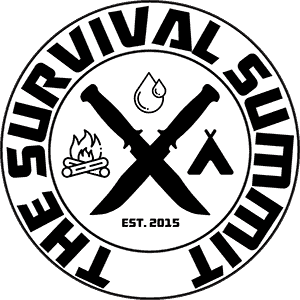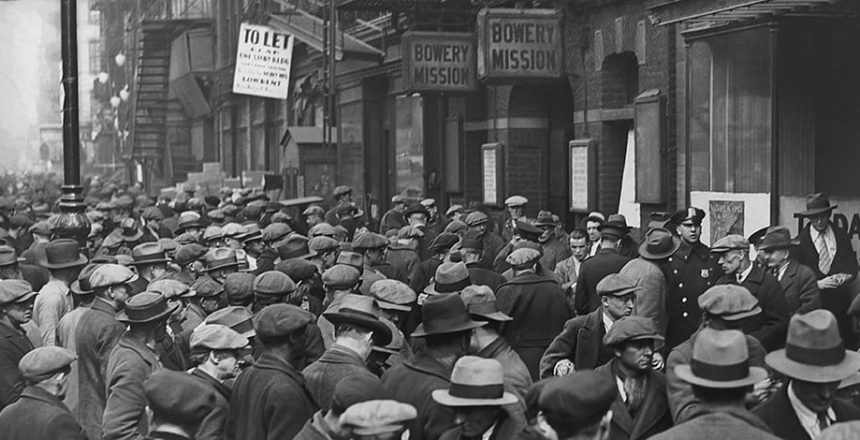Survive the GREATER Depression, with 50 Tips From the Great Depression
Editor’s Note: Many expert analysis have concluded that we are on the verge of the next Great Depression, or otherwise dubbed the “Greater Depression.” With housing bubbles, college debt bubbles, car loan bubbles, and more, the experts agree we are on the edge of something big!
The following article will offer you some insight to what it was like during the Great Depression, and allow you to use that information to prepare in advance for what is coming. This article has been generously contributed by AskAPrepper.com
The Great Depression was one of the most traumatic events in American history. Following the stock market crash of October 1929, industrial production crashed, construction shrank to a fraction of what it had been and millions of people found themselves on short hours or without work. Until the economy picked up again in 1935 life was a real struggle for the average American.
To get through the economic collapse and the grinding poverty that followed it, people had to adapt and learn new skills – or re-learn old ones. For that reason, many people who lived through it looked back with a sense of, maybe not exactly nostalgia, but pride in how they managed to cope.
A lot of the things people did during the Great Depression still make a lot of sense today. With our own economy looking vulnerable, and the risk of a new collapse always lurking just around the corner, would we cope as well as our grandparents and great-grandparents did? Here are some of the ways they took care of themselves and those around them through some of the hardest times the USA has ever seen.
Work
- Entire families moved in search of work. By staying together, they could support each other while not missing employment opportunities.
- Migrant farm work was a life-saver for many. Different crops needed harvesting at different times, so it was – and still is – possible to find several months’ work.
- People were willing to try any job. They didn’t ask “Do you have any work for a…?” But, “Do you have any work?” They were flexible because they had to be.
- Everyone in a family was prepared to earn money. Kids could make a valuable contribution too. Families worked for a common goal – earning enough to survive.
- Almost anything had some value. Driftwood collected from the beach could be split and sold as firewood. Most any kind of metal can be collected and sold as scrap.
- Government “New Deal” employment programs provided jobs and taught skills. They also created a lot of new infrastructure, including many roads – and the Hoover Dam.
- There was no such thing as retirement age. Anyone who could work did When money is tight, everyone needs to contribute whatever they can earn.
- A lot of jobs became part-time as employers tried to save money. Many people worked several part-time jobs, often putting in very long days.
- Many of the jobless spent all day going round employers, looking for any work they could find. Even an hour or two’s labor would make a difference.
- People created jobs for themselves. Some women would wake early to cook dozens of meals, then sell them outside factories and construction sites.
- Flexibility helped. Someone who knew a little about several trades had a better chance of finding work than someone who was an expert at one.
- Farmers would take on workers they didn’t have the money to hire, and pay them in produce instead.
Housing
- Many people lost their homes. Often, extended families – grandparents, aunts, uncles – ended up living in one house.
- Others were forced to live in their car or truck, buying cheap meals and washing at public gyms or swimming pools.
- The homeless often lived in tents – or shack or lean-tos they’d built themselves. Having a place to live, even a basic one, was better than sleeping rough.
- To save energy, walls were insulated with anything that would help keep heat in through the winter – mud, newspapers or tar paper. It all helped cut fuel costs.
- Homes were kept cooler than normal. Wearing more clothes indoors reduced the need to burn fuel, and that left more money for food.
- In summer people hung wet sheets over doorways and windows. As the water evaporated it drew in heat from the air, cooling the home slightly.
- Refinancing a home was one way to keep up the payments – and it could also free up cash for living expenses.
Money
- Life insurance policies were a safety net for those who had them. If money ran out the policy could be cashed in, helping keep the family afloat for a few more months.
- Many people rarely saw cash; barter economies quickly grew up. Small jobs might be paid with milk, fresh vegetables or fruit, especially in rural areas.
- With millions out of work, begging was common – and seen as desperation, not antisocial behavior. Outside restaurant was a favorite spot; only the rich could afford to eat there.
- People respected banks back then, but when banks started closing the trust soon faded. Nobody knew when their own might shut, so the wise kept cash at home.
- Many stores gave credit and let regular payments slide. They just kept track of what was owed and hoped it would be paid someday. Many stores went bankrupt because of this.
Food
- Having a vegetable plot made a huge difference. In 1929, 20% of Americans still lived on farms; most of the rest had big gardens, and the skills to grow their own food.
- Hunting and fishing were major sources of protein. Meat was expensive, but if you could harvest your own you had a better diet. Surplus was great for barter, too.
- Foraging was also popular. Nuts, berries, and wild greens helped put meals on the table, and kids and older people could forage as well as anyone.
- In the country, canning was an essential skill. A well-stocked pantry was both a source of pride and a life-saving reserve for the winter.
- People learned that you can eat almost anything if you’re hungry enough. Tumbleweed was used as fodder for cattle; then people found it could be eaten. Young plants are best.
- No part of an animal was wasted. Offal was fried, boiled or turned into ground meat. Even chicken feet could be boiled to add some taste to a broth.
- A little bit of bacon would add flavor to almost anything. The hard rinds or dry ends of a piece of bacon could be boiled – and butchers sold them for pennies.
- Communities divided vacant lots and parks into family vegetable plots. Housewives and kids spent much of their time growing extra food.
- To keep some variety in their diets, people traded the produce they grew with friends and neighbors.
- Meals were cooked from scratch – there were hardly any prepared foods in the shops. Recipes were usually simpler than today’s. That mean they were cheaper to make.
- Stores closed on Sundays, so fresh produce that would go bad by Monday would be sold off cheap late on Saturday. Shopping at that time was great for bargains.
- Livestock was a great asset. If you had a cow or even a few chickens, you were sitting on a wealth creator. Milk and eggs helped your own diet, and could be bartered.
- Meat and dairy products were expensive; bread, potatoes, and noodles were cheap and filling. People bulked out meals with carbohydrates. Lard or bacon fat added flavor.
- Soup was a popular meal. It filled you up, and the main ingredient was water. Almost anything could be made into soup – beans, potatoes, even stale bread.
Clothes
- Shoes were mended over and over. Holes in the sole were patched with leather from scrap belts or purses. Complete soles were cut from old tires.
- People learned to make and repair clothes. Any fabric could be used. Rural families made clothes from feed sacks. One woman turned a casket’s fabric lining into kids’ dresses.
- Fashion was canceled. People preferred to get more use out their old clothes and spend their money on food.
- When kids outgrew their clothes they were handed down to younger siblings or given to people who could use them.
- Really old clothes were cut up for rags to get some more use out of them. Why spend money on dusters and cleaning cloths when rags worked just as well?
Society and Attitudes
- Nobody felt entitled to be supported. People knew that they had to work as hard as they could to survive; if they didn’t, they could expect nothing.
- On the other hand, people were willing to help those who were trying but struggling. They knew they could be the ones needing help next, so most gave all they could spare.
- Communities became closer, giving mutual support and organizing donations of food or cash to those who needed them the most.
- Many towns set up welfare loan schemes. Money could be loaned to people who needed it, but it was expected to be paid back. Detailed records were kept of what was owed.
- Willingness to work hard, and to do what you could to support the community, was more highly valued than individualism and independence.
- People learned to keep a positive outlook on life. They learned that they could lose a surprising amount – almost everything – and keep going.
- Positivity was essential. There was no point complaining how bad things were – they were just as bad for almost everyone. What mattered was trying to make them better.
*****Get our newest gear list Updated for December 2021 HERE*****






8 thoughts on “Survive the GREATER Depression, with 50 Tips From the Great Depression”
During the 30’s Grandpa, Grandma, Mom, Dad, my uncle and I lived in what would be today a tiny starter house. They had a big garden and did a bunch of canning – as nearly everyone did who could afford the jar rubbers. Grandma stayed home and raised me as well as the "normal" things while the others found work. From what I recall of several of my friends we were pretty darn well off.
Hunting is pretty expensive and labor intensive – trapping is much more efficient. So is a trot line or net.
All those worn out clothes? The buttons were cut off and saved. There were quilts that I could name just about every piece of cloth!
You ate what was available. I suspect that will shock many of todays kids.
Dave… GREAT feedback. These are the things people need to hear. Thanks for sharing! (Now I understand why my grandparents had jars of buttons everywhere!)
Buy yourself some clothesline and clothespins. Hanging your clothes outdoors to dry will become the norm. Even in the winter, your clothes will evaporate some of the moisture as they hang out and when you bring them inside to finish drying, it will be a lot quicker.
Great tips Jennell! That has to be a seriously overlooked prep!
My great grandma told me alot about depression and how she raised 6 kids on her own because her husband died from tb.said how they are possums,wild bores and all that and chickens will be important so many new younger preppers I’d talked to don’t realize how much you can do with some chicken wire fence,catch rabbits and such and let them breed to eat,such things as axes,sledge hammers,saws to cut and split wood,so many little things people over look,
My Uncle Bud was quite the shot he would go into the Fields and Shoot Robins in the head and his mother would ad the meat to that nights stew. The entrails were put out next to a snare to catch rodents,Raccoons,Etc.. which also made it in to the pot.
People ate just about anything for protein back then.
Great advice and info on eating, but what about after when you have to do the paper work?
http://www.ehow.com/how_4514690_make-toilet-paper.html
Grego
Thanks. I particulary liked the statements about people not thinking they were entitled to special treatment, privileges, and benefits. I cannot help but wonder how and if the greivance generation is going to survive when they are finally confronted with the fact that they have to take care of themselves and no one else is going to.
Comments are closed.